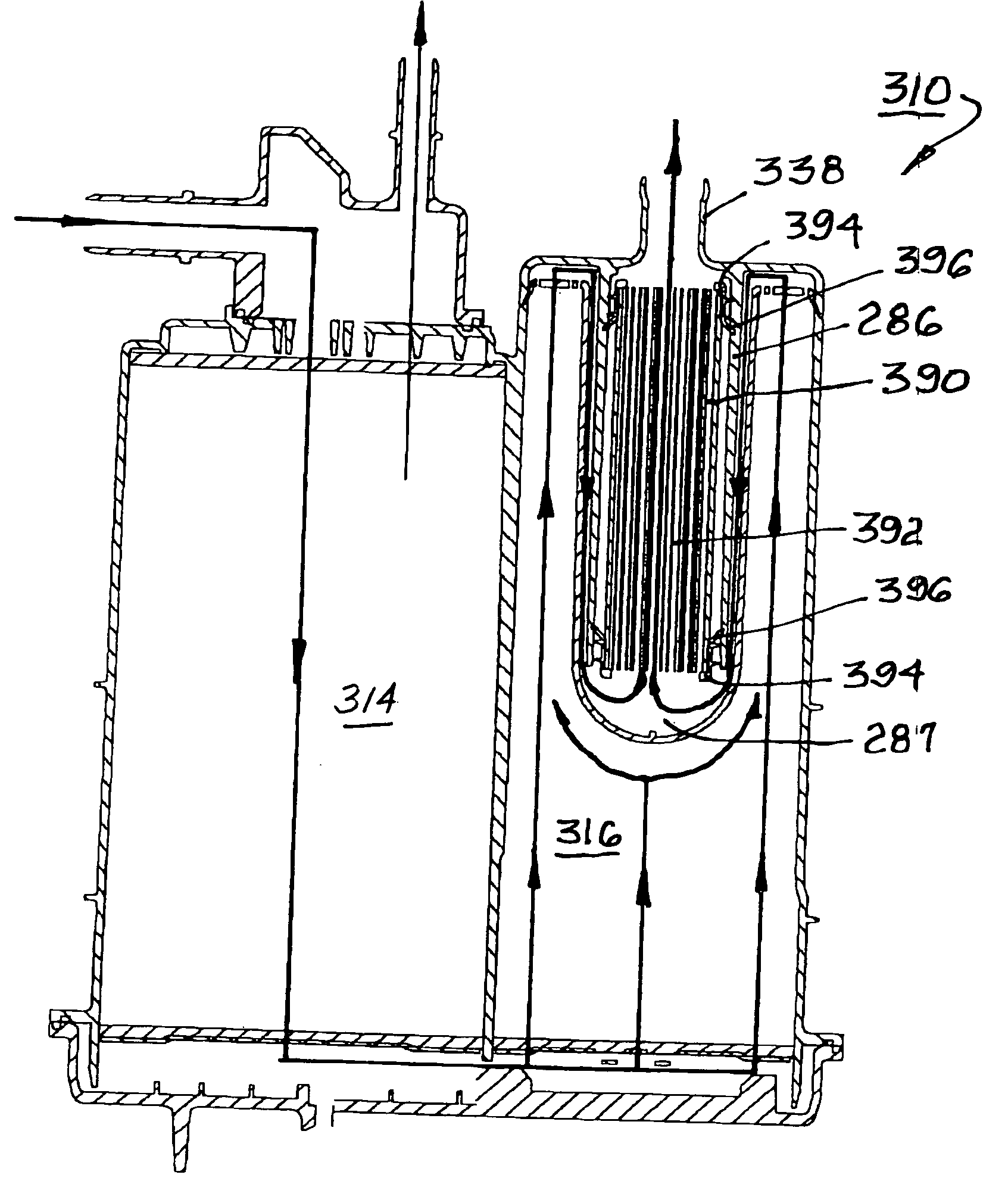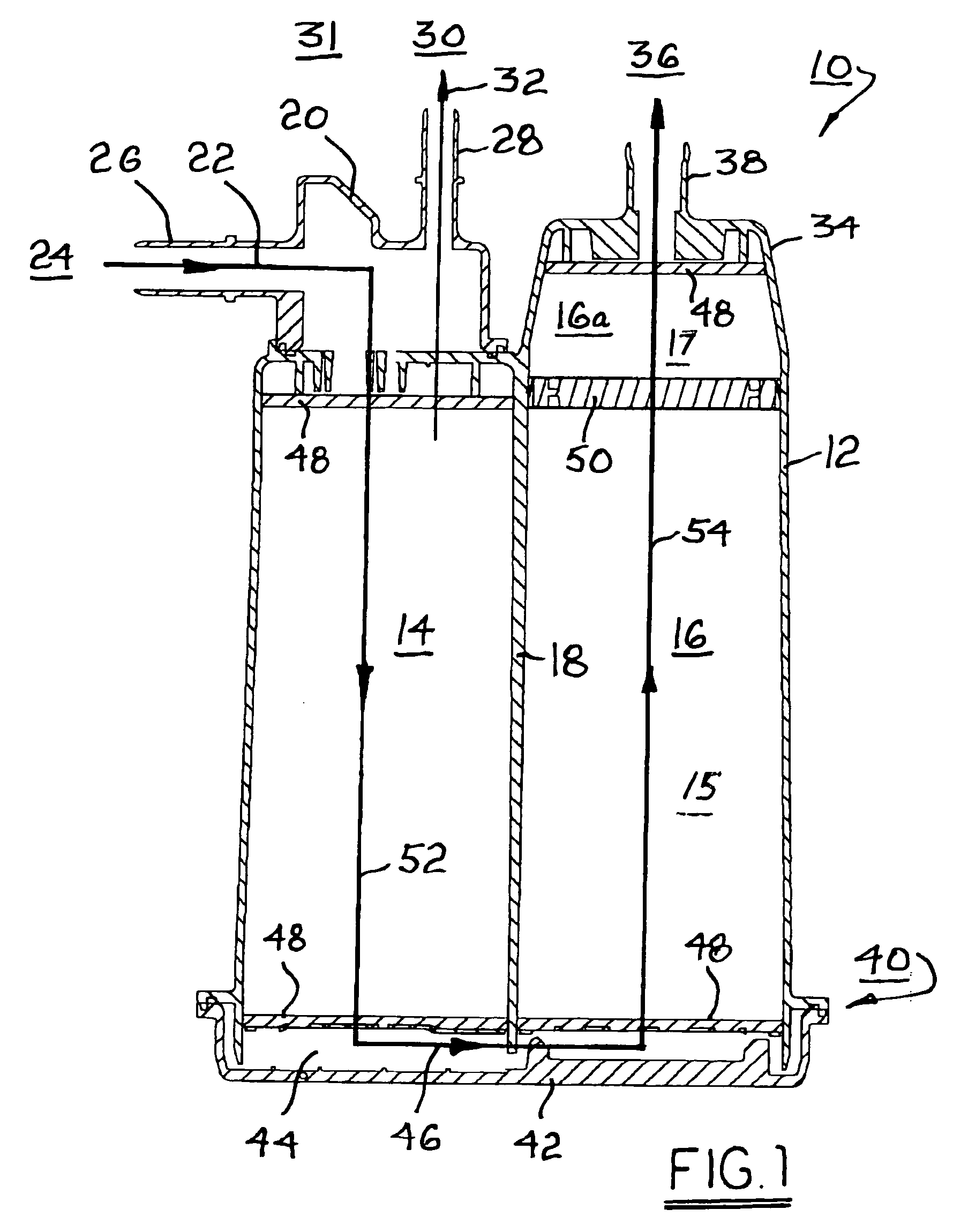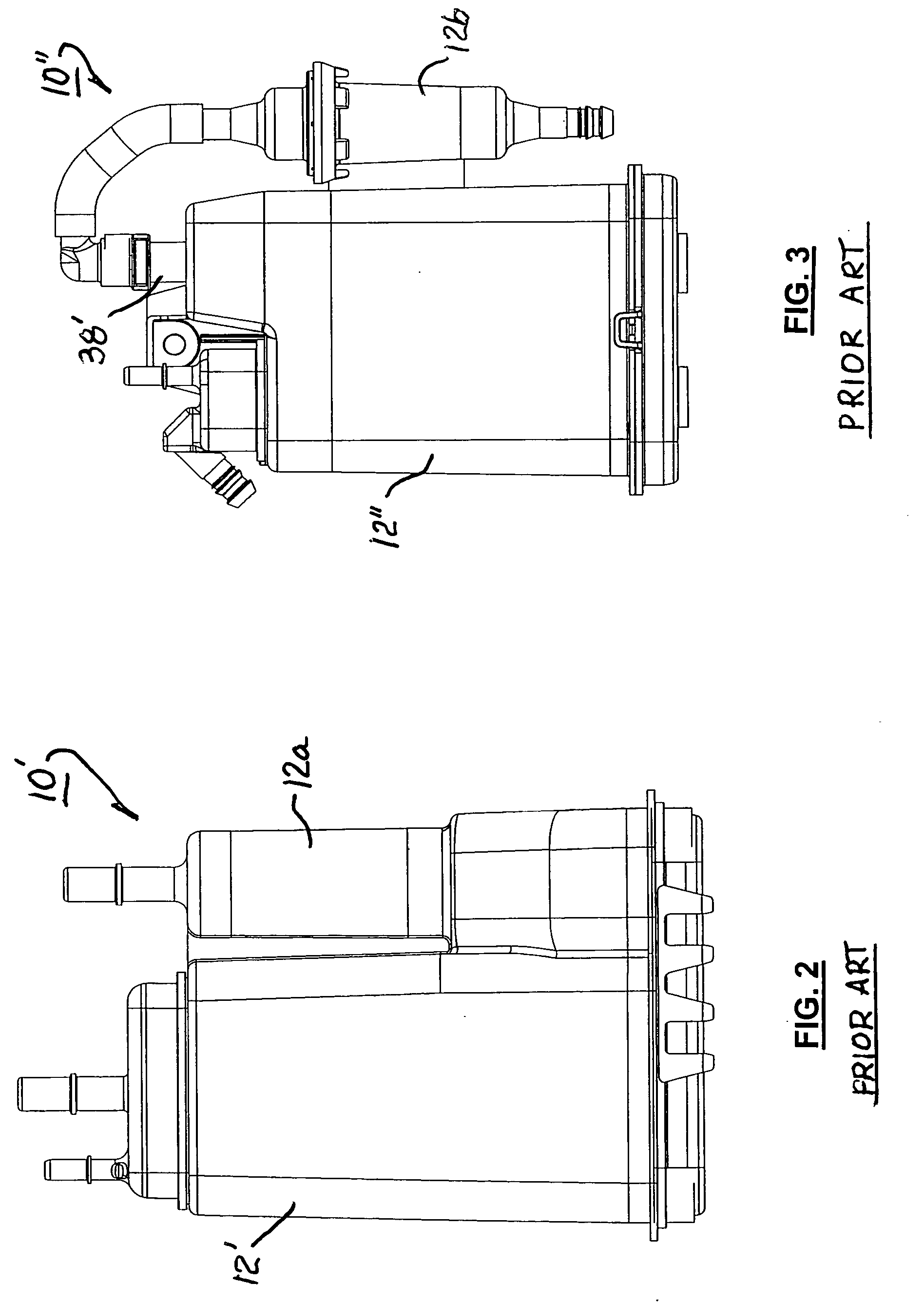Evaporative emissions canister having an internal insert
a technology of evaporative emissions and canisters, which is applied in the direction of fuel injection apparatus, non-fuel substance addition to fuel, charge feed systems, etc., can solve the problem of reducing the total volume of carbon required for the canister, and achieves path-length sensitive effects, increased l/d, and reduced carbon requirements
- Summary
- Abstract
- Description
- Claims
- Application Information
AI Technical Summary
Benefits of technology
Problems solved by technology
Method used
Image
Examples
embodiment 210
[0051] An important manufacturing advantage of canister embodiment 210 is that it provides a common platform for either LEV II or PZEV applications simply by adding or omitting scrubber 390. No other changes are required and the footprint within a vehicle is identical.
embodiment 310
[0052] Scrubber 390 is inserted into cylindrical tube 286 during assembly of embodiment 310 and must be retained in place during the working lifetime of the canister. First and second retaining seals 394 may be installed at the periphery of each end of scrubber 390, seals 394 having flexible wipers 396 similar to insert wipers 180 for centering the scrubber within the canister. Alternatively, the scrubber may be retained by annular polymeric gaskets (not shown), which may be formed in known fashion from a cross-linkable elastomeric composition such as a silicone and may be installed with the scrubber in liquid form prior to becoming cross-linked.
[0053] Because a scrubber formed as a carbon monolith is relatively fragile and easily damaged, such a scrubber is vulnerable to shock and vibration. In addition, silicone elastomers such as Viton are known to exhibit relatively high coefficients of thermal expansion. Under cold start conditions, for example, in the arctic, a scrubber could ...
PUM
 Login to View More
Login to View More Abstract
Description
Claims
Application Information
 Login to View More
Login to View More - R&D
- Intellectual Property
- Life Sciences
- Materials
- Tech Scout
- Unparalleled Data Quality
- Higher Quality Content
- 60% Fewer Hallucinations
Browse by: Latest US Patents, China's latest patents, Technical Efficacy Thesaurus, Application Domain, Technology Topic, Popular Technical Reports.
© 2025 PatSnap. All rights reserved.Legal|Privacy policy|Modern Slavery Act Transparency Statement|Sitemap|About US| Contact US: help@patsnap.com



